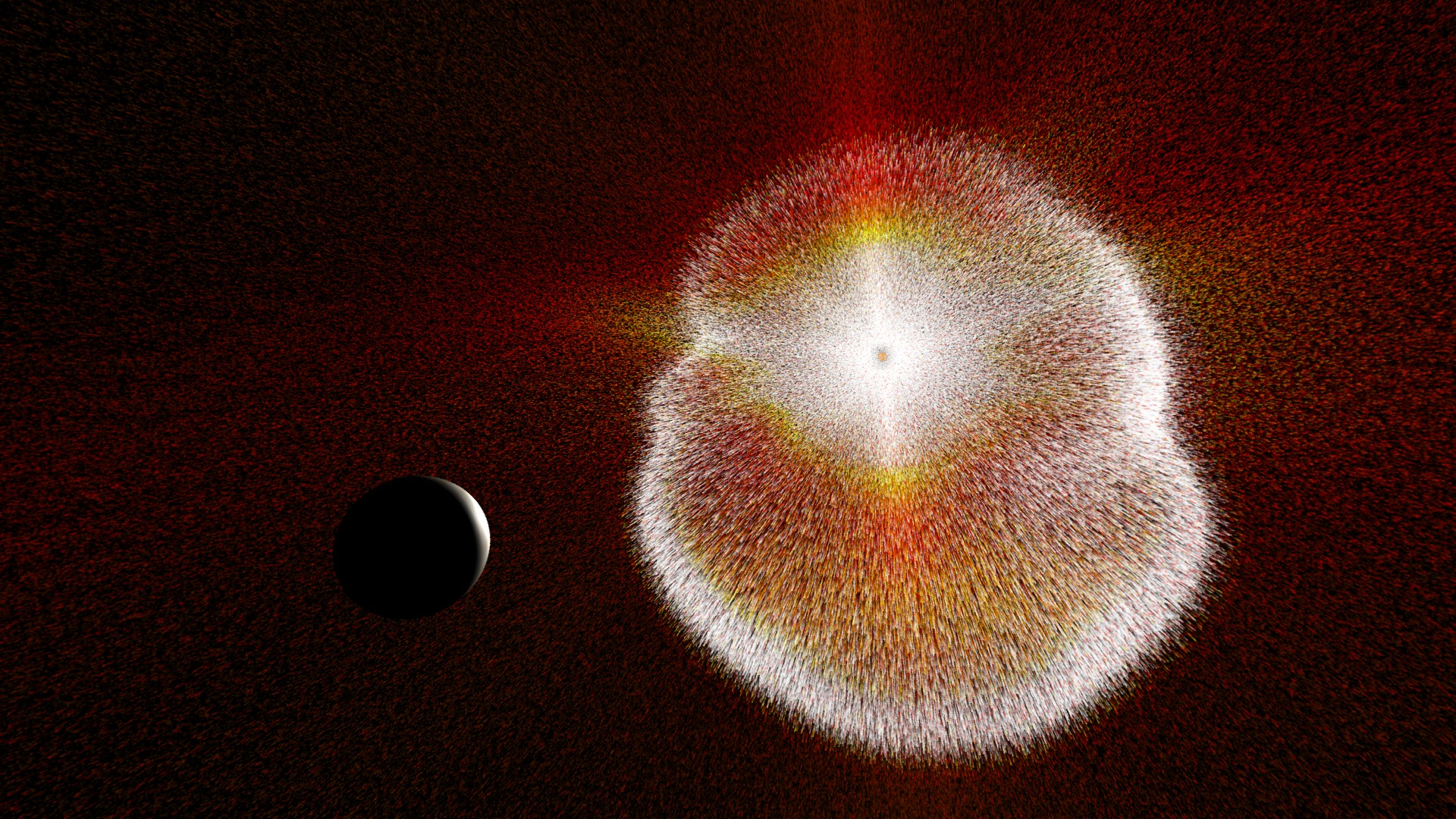Q&A with NASA Visualizer, Lori Perkins
This gallery was created for Earth Science Week 2015 and beyond. It includes a quick start guide for educators and first-hand stories (blogs) for learners of all ages by NASA visualizers, scientists and educators. We hope that your understanding and use of NASA's visualizations will only increase as your appreciation grows for the beauty of the science they portray, and the communicative power they hold. Read all the blogs and find educational resources for all ages at: the Earth Science Week 2015 page.
How did you discover your passion for Earth Science?
I have loved Earth Science since I was a little girl. I was the only little girl in my class that loved changing cloud patterns, thunderstorms, and lightning.
What do you enjoy most about what you do?
I love that my job gives me the opportunity to explain all sorts of interesting science results and phenomenon.
What inspired you to work in this field?
The Star Wars movies and NASA's Apollo Program!
Where do you work and do you remember what it was like on your first day of work?
Now, I work at NASA's Scientific Visualization Studio. I started at NASA working as a student writing fortran code in a data processing facility that aimed to provide error-free telemetry transmissions from spacecraft to the ground. On my first day, I remember all of my coworkers speaking in acronyms. I didn’t know what the acronyms meant.
What are some of the most important lessons you have learned in your life?
Don't be afraid to ask questions and don't be afraid to throw out an idea that might seem crazy.
What do you consider your greatest accomplishment?
I worked on a piece that won the National Science Foundation's Visualization of the Year. It is a wonderful piece that explains the important connection between the Sun and our Earth.

A still image from the Except from "Dynamic Earth", which won the 2013 NSF International Science and Engineering Visualization Challenge for the Video category.
For more information about this visualization, click here.
What was the most difficult moment of your career? What did you learn?
Early in my career, I had to choose a technology to use as the core of my software system. I made the best choice at the time, but 6 months later, I realized that my choice was causing larger system errors. I thought my supervisors and project leads would be furious that I needed to change the system to simplify the design. I asked to explain my problem and proposed solution, and they supported me. I learned that at the beginning of a project nobody understands all of the issues.
Who has been the biggest influence on your life, and what lessons did they teach you?
NASA has so many amazing scientists and engineers developing groundbreaking research. It is a privilege to play a small part on this team.
How has your career been different than what you'd imagined?
I completed my Master's Degree in Computer Science/Telecommunication because I wanted to work in the Space Network to ensure all telemetry would be downloaded efficiently and error-free. That work gave me an opportunity to showcase the science data. I never thought that I would have so many opportunities.
Did you have to overcome any gender barriers in your career?
Everybody faces barriers. I worked in one three-story building that only had one woman's bathroom. If that bathroom was out of service, I would have to go to another building. Things have changed now!
What does your future hold?
I am optimistic! Remote Sensing information comes from many sources like satellites, balloons, aircrafts, and computer simulations. Data visualizers combine different information collected from different sources to highlight the diverse work of NASA's scientific community. The data is getting exponentially larger so visualizing it is becoming more important.
What one piece of advice would you like to pass on to the next generation?
Don't let anybody tell you that your dreams are impossible. Smart people figure out solutions to problems that seem impossible at first.
-- Lori Perkins, Visualizer NASA GSFC Scientific Visualization Studio

Lori Perkins is shown speaking in front of the Hyperwall at NASA's Goddard Space Flight Center.
For More Information
Credits
Please give credit for this item to:
NASA's Scientific Visualization Studio
-
Interviewee
- Lori Perkins (NASA/GSFC)
-
Project support
- Leann Johnson (Global Science and Technology, Inc.)
Release date
This page was originally published on Friday, October 23, 2015.
This page was last updated on Wednesday, May 3, 2023 at 1:49 PM EDT.
